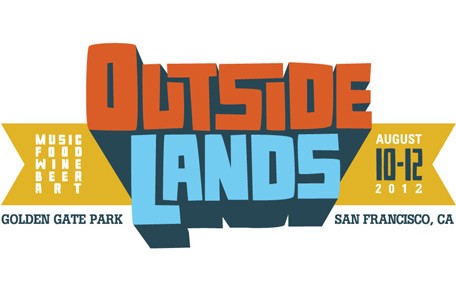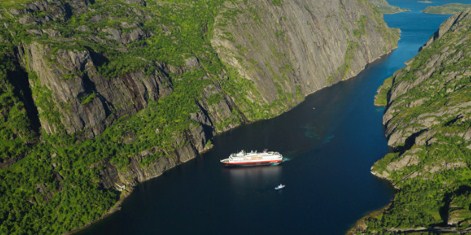Alaska is known as the last great frontier. At more than 663,000 square miles, the vast state is only populated by around 700,000 people; those largely in a few cities and towns. With its incredible natural beauty, adventure opportunities and very unique topography and wildlife — one of the best ways to see Alaska is by the water.
There are a lot of options available for cruising in Alaska, from the typical large cruise ships with all the amenities to small ships with personalized service and itineraries. I chose to go with the latter, setting sail with UnCruise Adventures in September for a thrilling Alaskan journey of a lifetime. This Seattle-based company operating for 20 years has high standards for their staff, guest experiences, cultural appreciation and environmental stewardship.
My partner and I boarded the Safari Endeavor for the Exploring Muir’s Wilderness trip, a 7-day journey of the Inside Passage with a maximum of 84 guests, visiting spots from Endicott Arm to Glacier Bay National Park, with which John Muir is closely identified.
There are hardly words to describe what the next seven days were like. First, before I even get to what we saw and did, I have to give kudos to the incredible teams that run these small ships. The guides were not only knowledgeable, with degrees in various scientific fields, but also so sincerely passionate about the place, getting excited as children on Christmas morning when we would make a wildlife sighting or an iceberg calved off. The food and inside staff were all equally amazing (I’m now still working off the several pounds I gained from their delicious meals).
On our first morning, we woke up in Endicott Arm, with the staggering, mesmerizingly blue Dawes Glacier right in front of the boat. In timed groups, skiffs took us up close and personal with the glacier, watching the seals swim and laze on small icebergs and learning more about the glacier. We even did a shot of peppermint schnapps off a piece of glacial ice!
In Port Houghton, early in the morning we could hear excited shouts and footsteps. There were several pods of humpback whales, with a dozen or more whales in each, feeding all around the Safari Endeavor. Their backs would glide up out of the water as they ate — once, twice, maybe three times — until the final dive, when their flukes came up out of the water in a truly awe-inducing sight. Fun fact: did you know that each whale’s fluke is totally unique, much like our fingerprints?
The whales stayed with us the entire day, along with playful sea lions, as we explored the tidal pools onshore with a guide and went kayaking in the bay. In Thomas Bay, we took a three-hour guided kayak tour, where we spotted dozens of Bald Eagles.
One day the captain made an exciting announcement over loudspeaker: The weather conditions, timing and tides were all in perfect alignment for us to go into a place they rarely had the opportunity to — Fords Terror. So named because of a crewman who rowed into the narrow channel in 1899, only to find that as the tides rose, the currents and rising waters created terrifying conditions that he barely survived. The crew were as excited as the guests to explore this remote, magical, rarely-visited place; it was the first time all season (at the tail end of the season, too) they had been able to go in. Another benefit for small ships: they can get places where the huge cruises cannot.
The grand finale to all this was Glacier Bay National Park. Covering over three million acres, the park is home not only to the dynamic, constantly-changing glacier, but also rugged mountains, wild coastlines, fjords and even a temperate rainforest. It’s part of a 25-million acre World Heritage Site, and is one of the worlds first and largest protected natural areas. In fact, when John Muir visited here in 1879 he was so struck by the solitude, remote beauty and purity that he instantly sought its protection — a move that led to the National Park Service we know today.
Park Ranger J.T. McLaughlin boarded the ship to join us for this journey. He said of Glacier Bay, “It is one of the most pristine places on earth, one of the very few that is almost entirely untouched by human development or impact.” Unlike other national parks such as Yellowstone, magnificent as they may be, Glacier Bay has never been affected by logging, fishing, building, poaching or other human activities.
After moving down roughly 65 miles from the entrance, passing multiple other glaciers, islands and increasingly bigger icebergs, we arrived in the afternoon at the imposing Johns Hopkins Glacier, a product of the Little Ice Age. This glacier is incredibly active — in the last mere 350 years it has grown and retreated down that entire 65 miles we had just traversed. In fact, the glacier is what created that passage.
It felt like a cathedral of sorts, this place that John Muir called a “Temple of Nature.” Ranger McLaughlin ended the day by urging us all, when we returned home, to notice the natural world around us — the birds overhead as we drive, the flowers we pass on our errands, the sky above our office windows.
“The natural world is all around us everyday, but we may never see it,” said Ranger McLaughlin. “We come somewhere like this to see these wild places and remember our origins; remember where we came from, and what we belong to. We need to be reminded that there’s so much more. We spent 10,000 years vying over resources and imaginary boundaries, and the national park system reminds us that this belongs to all of us.”
As our group of passengers and crew stood on the deck in awe, looking up at the mighty and powerful glacier, watching pieces of it calve off into the water below with a thunderous roar — we descended into silence at times, struck by how very small we seemed. It is the moment you realize that you do not inhabit a place — the place inhabits you.












JT was the ranger on board our Uncruise trip into Glacier Bay. He had a remarkable gift for tying different stories into an entire tale. We’ve sailed with Uncruise 4 times and the experience has been wonderful each time.
Thanks for sharing Dave! I absolutely loved our UnCruise experience as well and would go again in an instant. And yes – JT was great!